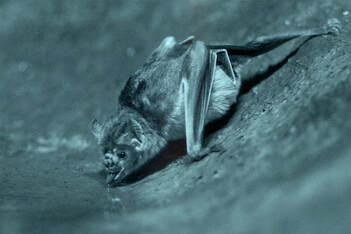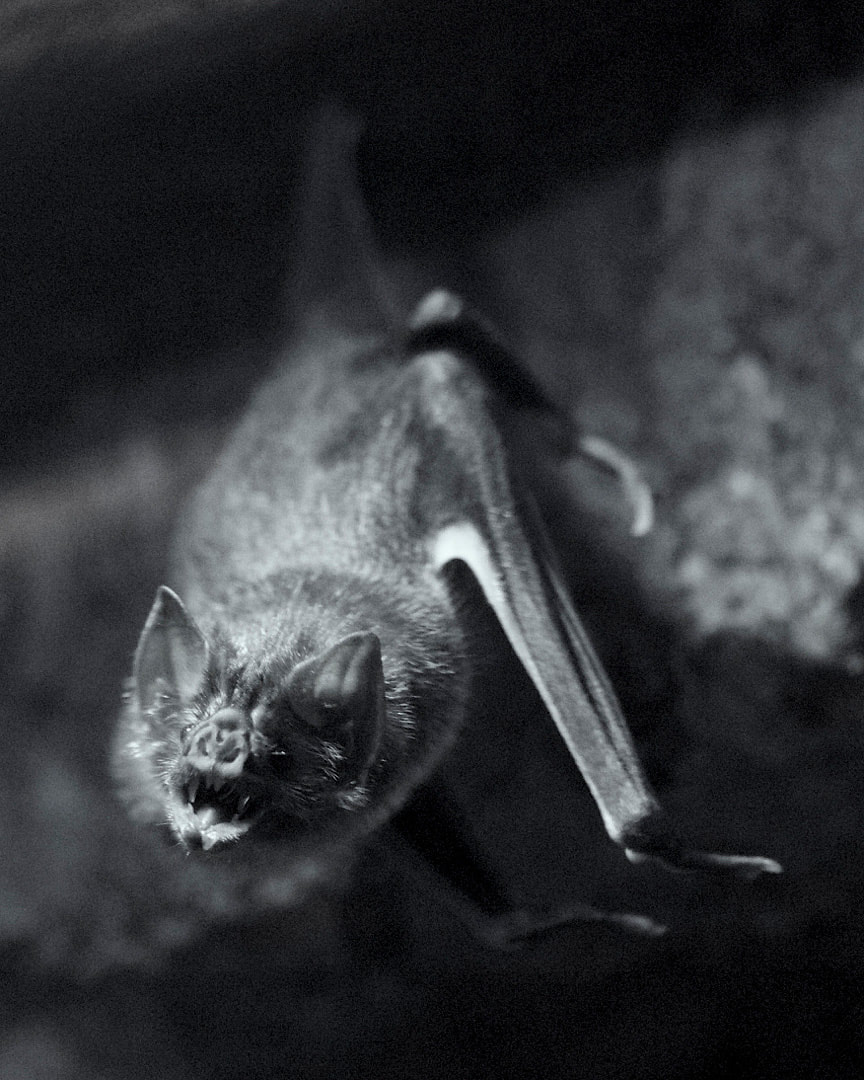Common Vampire Bat (Desmodus rotundus)
|
Physical Description: Common Vampire Bats are small, furry grayish-brown bats with lighter brownish bellies. They range from just 2.75 to 3.5 inches in length, have a wingspan of up to 15.75 inches and weigh just 1.2 ounces. They have large eyes, a rounded nose, pointy ears and very sharp teeth.
Habitat: They live in warmer climates including rainforests and deserts. Range: They are found in Central and South America as well as Mexico. Diet: They drink the fresh blood of large, warm-bodied animals. Sometimes fresh blood from other creatures. Lifespan: They live 9 years on average in the wild and up to 20 years in human care. Social Structure: These bats typically live in colonies of between 20 to 100 animals, however they can include up to 5,000 individuals. Vampire Bats give birth to one or two young after a 7-month gestation. Young can be born any time of year. At first, mothers feed their young milk but will begin feeding them regurgitated blood at two months of age. By four months, they young join mom on her nightly hunts. At five months of age, they are full grown. Status: Least Concern1 Other: Common Vampire Bats are the only mammals in the world known to feed exclusively on the blood of their prey. Normally, that prey includes sleeping warm-blooded creatures such as pigs, cattle, chickens or even humans but recently, some Vampire Bats have been recorded drinking the blood of toads, snakes and crocodiles. Contrary to popular belief, these animals do not suck blood but make a small incision with their razor-sharp teeth and lap up the flowing blood. They have a chemical in their saliva which is 20 times more powerful than the most effective anti-clotting medicines! 1 https://www.iucnredlist.org/species/6510/21979045 |
|
Rainforest Building open daily from 10:30 am to 3:30 pm








